Archaeology
-
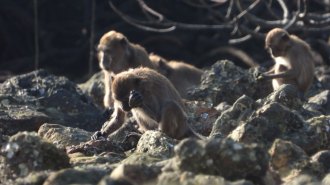 Archaeology
ArchaeologySome monkeys accidentally make stone flakes that resemble ancient hominid tools
A study of Thailand macaques raises questions about whether some Stone Age cutting tools were products of planning or chance.
By Bruce Bower -
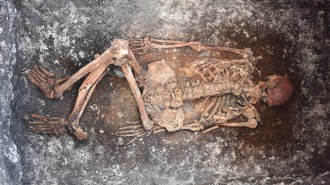 Archaeology
ArchaeologyThe Yamnaya may have been the world’s earliest known horseback riders
5,000-year-old Yamnaya skeletons show physical signs of horseback riding, hinting that they may be the earliest known humans to do so.
-
 Particle Physics
Particle PhysicsMuons unveiled new details about a void in Egypt’s Great Pyramid
The subatomic particles revealed the dimensions of the void, discovered in 2016, and helped researchers know where to stick a camera inside.
-
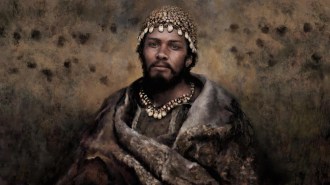 Archaeology
ArchaeologyAncient DNA unveils disparate fates of Ice Age hunter-gatherers in Europe
Ancient DNA unveils two regional populations that lived in what is now Europe and made similar tools but met different fates.
By Bruce Bower -
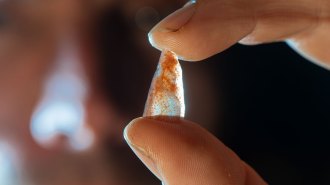 Archaeology
ArchaeologyHomo sapiens may have brought archery to Europe about 54,000 years ago
Small stone points found in a French rock-shelter could have felled prey only as tips of arrows shot from bows, scientists say.
By Bruce Bower -
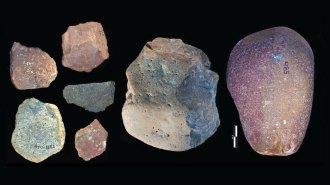 Anthropology
AnthropologyHominids used stone tool kits to butcher animals earlier than once thought
Finds in Kenya push Oldowan tool use back to around 2.9 million years ago, roughly 300,000 years earlier than previous evidence.
By Bruce Bower -
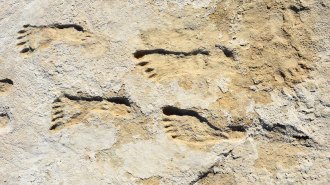 Humans
Humans50 years ago, scientists debated when humans first set foot in North America
In 1973, archaeologists debated when people first arrived in the Americas. Mounting evidence suggests its much earlier than they thought.
-
 Archaeology
ArchaeologyVikings brought animals to England as early as the year 873
A chemical analysis of cremated remains offers physical evidence of the arrival of Norse animals to England in the ninth century.
By Anna Gibbs -
 Archaeology
ArchaeologyChemical residue reveals ancient Egyptians’ mummy-making mixtures
Chemical clues in embalming vessels reveal previously unknown ingredients used to prepare bodies for mummification and their far-flung origins.
By Bruce Bower -
 Physics
PhysicsMuon scanning hints at mysteries within an ancient Chinese wall
Density fluctuations within the ancient rampart encircling the city of Xi’an could be defects or yet-to-be-discovered archaeological finds.
-
 Archaeology
ArchaeologyMysterious marks on Ice Age cave art may have been a form of record keeping
Hunter-gatherers during the Ice Age may have recorded when prey mated and gave birth, suggesting that these people possessed complex cognitive skills
By Anna Gibbs -
 Chemistry
ChemistryThese chemists cracked the code to long-lasting Roman concrete
Roman concrete has stood the test of time, so scientists searched ruins to unlock the ancient recipe that could help architecture and climate change.